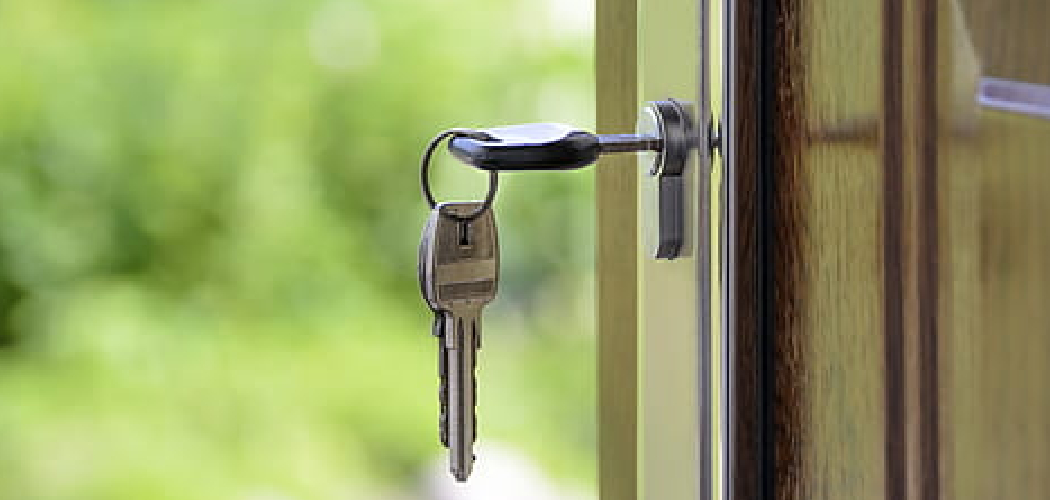Sliding doors are a popular feature in many homes, commonly serving as entrances to patios, balconies, or backyard spaces. These doors combine aesthetic appeal with functionality, allowing for a seamless connection between indoor and outdoor areas. However, encountering a locked sliding door can be an inconvenient challenge. Whether you’ve misplaced the keys, the lock mechanism is malfunctioning, or an accidental lockout has occurred, the situation can quickly become frustrating.
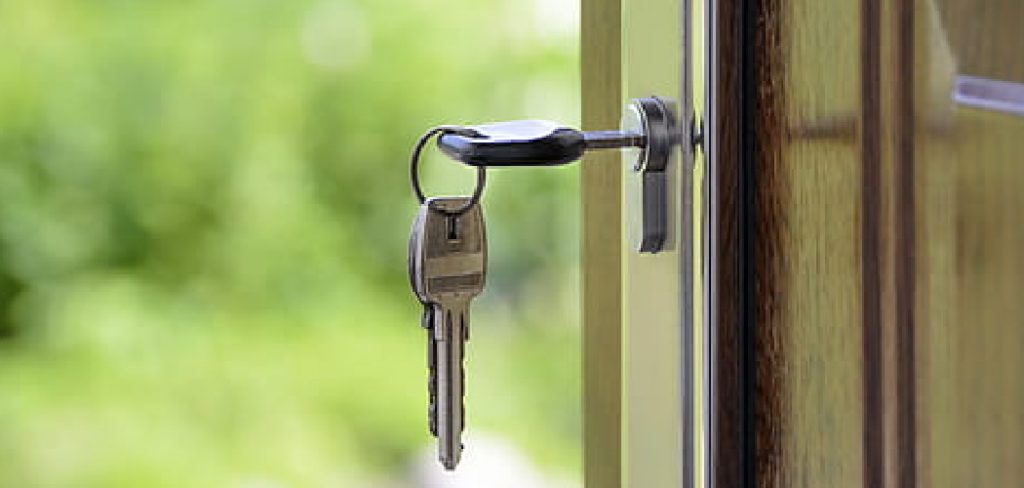
Knowing how to open locked sliding door safely and effectively is essential to resolving the issue without causing damage to the door or compromising its security. This article will guide you through practical and reliable methods that can help you regain access to your home while ensuring the integrity of the sliding door itself.
Understanding the Lock Mechanism
Sliding door locks come in various designs, each offering distinct levels of security and convenience. Familiarizing yourself with the types of locks and potential issues can help you troubleshoot problems effectively.
Types of Sliding Door Locks
- Standard Latch Locks: These are the most common and are usually on the door handle. They are simple to use and provide basic security.
- Keyed Locks: These locks require a key for locking and unlocking, offering an extra layer of protection, especially for exterior sliding doors.
- Foot or Security Bars: These bars at the bottom of the door track prevent the door from sliding open even if the primary lock is compromised.
- Electronic or Smart Locks: These modern options are controlled using keypads or smartphone apps, providing advanced security features and convenience.
Why Sliding Door Locks Get Stuck
Several factors may cause a sliding door lock to become stuck:
- Misalignment: The latch or lock mechanism may shift over time due to wear or misaligned tracks, preventing proper operation.
- Dirt, Debris, or Rust Buildup: Accumulated particles or corrosion inside the lock can hinder its functionality and make it difficult to turn or engage.
- Damaged or Worn-Out Components: Regular usage and age can lead to wear and tear on the locking parts, rendering them less effective or inoperable.
Understanding these aspects can help you identify the root cause of the issue and choose the most appropriate solution.
Assessing the Situation
When your sliding glass door lock is malfunctioning, thoroughly assessing the situation is essential before attempting any repair. Taking a systematic approach will help you pinpoint the issue and avoid causing further damage.
Check for Alternate Access Points
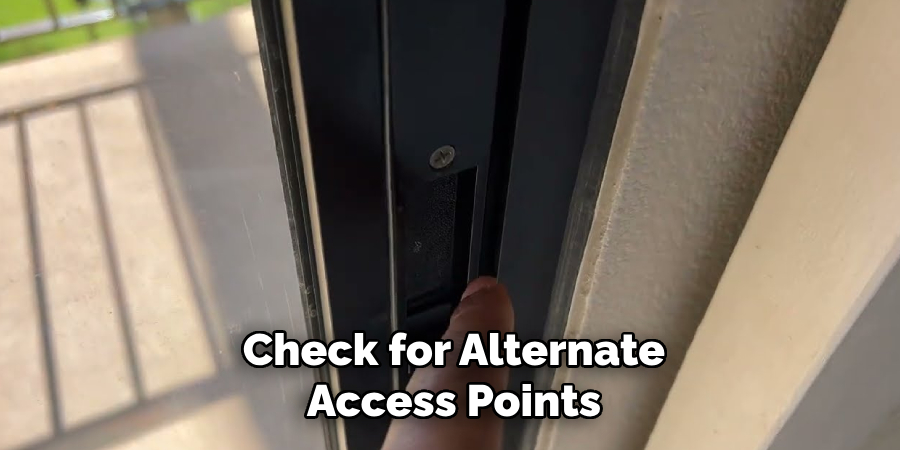
Before focusing solely on the jammed lock, check whether other doors or windows provide a way to enter or exit safely. This can save time and effort, especially if the sliding door is not the sole entryway.
Inspect the Lock from Both Sides
Examine the lock mechanism from both the interior and exterior of the door. Look through the glass to determine if the latch is fully engaged, partially stuck, or obstructed by an object. Understanding the positioning of the latch can provide clues about whether the issue is mechanical or caused by external factors.
Examine the Door Track and Frame
Carefully inspect the sliding door’s track and frame. Dirt, debris, or rust buildup within the track can prevent smooth operation of the lock. Similarly, check for signs of a bent or warped frame, as these can interfere with the alignment and functionality of the locking system. Addressing these obstacles early can make the repair process much simpler.
How to Open Locked Sliding Door: Unlocking a Sliding Door Without a Key
If you find yourself locked out and don’t have a key, there are several methods you can try to unlock a sliding door. Always ensure you have permission to access the door, and use these techniques responsibly.
Method 1: Using a Credit Card (for Latch Locks)
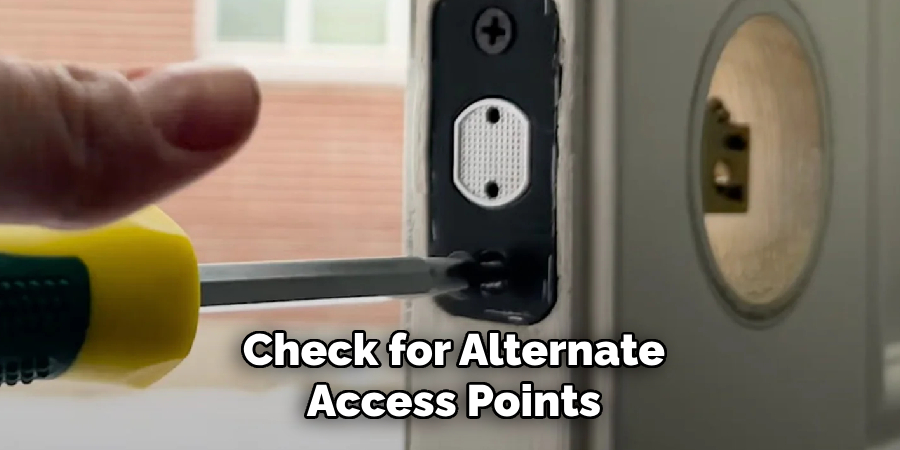
One of the simplest ways to unlock a sliding door with a latch lock is to use a flexible card, such as an old credit card or a membership card. Slide the card between the door and the frame where the latch is located. Gently wiggle the card while applying slight pressure to push the door toward the opening. The goal is to disengage the latch, enabling the door to slide open. It may take a few tries, so work patiently.
Method 2: Manipulating the Lock with a Flat Tool
A flathead screwdriver can be used to manipulate the locking mechanism for latch locks. Insert the tip of the screwdriver between the latch and the frame. Carefully apply upward or sideways pressure, depending on the lock’s orientation, to lift or push the latch, releasing it. Be mindful of not damaging the door or frame during the process.
Method 3: Lifting the Door off the Track
If the sliding door seems stuck, another option is to lift it out of its track. Gently but firmly lift the door upward and pull it toward you to remove it from the track. Once the door is off, you can inspect the locking mechanism for blockages or damage. This method requires caution, as improperly handling the door can lead to injury or damage.
Using Tools to Open the Lock
Tools can be used to open the lock if previous methods have not worked. However, proceeding cautiously and ensuring legal compliance before attempting these techniques is important.
Lock Picking (if legally permitted)
Lock picking is a skill that involves using tools like a tension wrench and a pick to manipulate the pins within the lock. Begin by inserting the tension wrench into the bottom of the keyway and applying slight pressure. Then, use the pick to lift each pin until it is aligned, allowing the lock to turn. This method requires patience and practice, so it may not work immediately for those inexperienced in lock picking. Ensure that picking a lock is allowed by law in your location before proceeding.
Drilling the Lock (as a Last Resort)
Drilling the lock should always be a last resort, as it will destroy the locking mechanism and require the lock to be replaced. To drill, center a drill bit on the lock cylinder and carefully drill through it to break the internal pins. This process will render the lock unusable, so be prepared to replace it afterward. Exercise caution to ensure safety and minimize damage to the door.
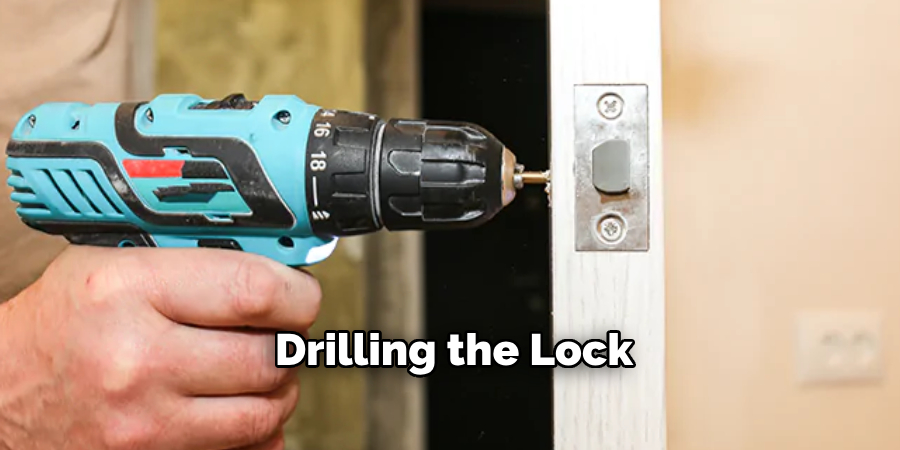
Using a Bump Key (for Keyed Sliding Doors)
A bump key is another tool that can be used to unlock a sliding door. It is specifically designed to fit into standard locks. For use, insert the bump key into the lock and lightly tap it with a small tool while applying slight turning pressure. This action may align the pins and unlock the door. Be aware that bump keys should only be used on locks you own to avoid legal or ethical issues.
These methods require responsible use and should only be attempted in legitimate circumstances where you have authorization.
Opening a Sliding Door with a Security Bar or Pin
Removing a Security Bar
If a sliding door has a security bar in place, it’s essential to determine whether the bar can be accessed and removed. Check if the bar can be lifted or shifted from the outside. Sometimes, you may use a long, thin tool such as a flathead screwdriver or metal rod to push the bar out of its holder. Be patient and apply consistent pressure while not damaging the door or surrounding parts during the process. Removing the security bar typically requires precision and care to disengage it without causing harm.
Disengaging a Pin Lock
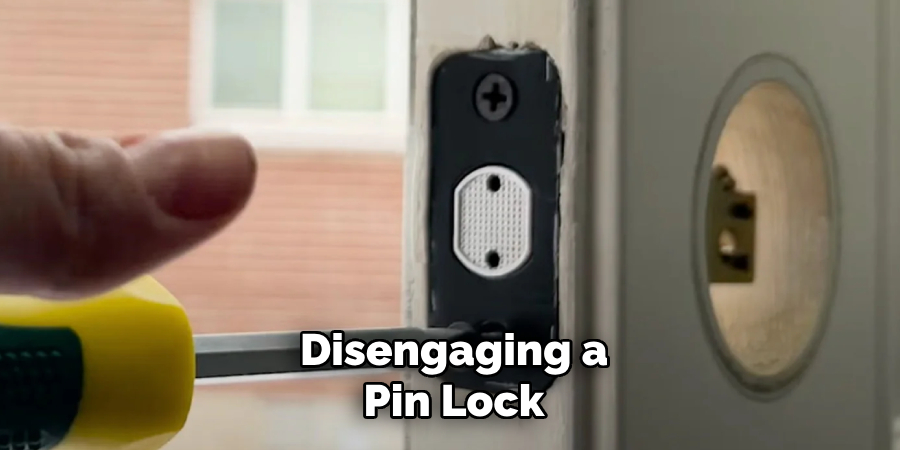
Sliding doors often come with pin locks that add an extra layer of security. If the pin is visible and accessible, use a pair of pliers to turn or pull it out carefully. Gently work the pin until it loosens enough to be removed. If the pin is stuck and cannot be pulled out directly, try pushing it back through the drilled hole. This step requires a bit of force but should be handled with caution to prevent damage to the lock or door. Always ensure proper authorization before proceeding with these methods.
Preventing Future Lockouts
Install a Backup Entry System
Consider upgrading to a keypad entry or smart lock system. These options provide quick and secure access without needing a physical key. Smart locks can also offer remote unlocking capabilities, adding convenience and flexibility in case of an emergency or if you’re away from home.
Hide a Spare Key in a Secure Location
Keeping a spare key outside your home can serve as a simple solution to avoid lockouts, but it must be stored securely. Use a lockbox with a combination code or conceal the key in a discreet, hard-to-spot compartment. Avoid obvious locations like under mats or plant pots, as these are commonly searched spots for hidden keys.
Maintain Your Lock and Track
Regular maintenance of your locks is crucial to prevent issues. Lubricate the lock mechanism periodically to keep it functioning smoothly and inspect the track for dirt or debris that may cause sticking. Ensuring your lock stays in good condition reduces the chance of a malfunction that could lead to a lockout.
Install a Sliding Door Lock with Interior Access
For sliding doors, consider using locks that can be disengaged from the inside without requiring a key. This allows a quick and easy exit in case of emergencies and minimizes the risk of being stuck outdoors.
Safety and Legal Considerations
Respect Property Rights
Only attempt to unlock doors that you own or have explicit permission to access. Illegally tampering with locks or doors could lead to serious legal consequences. Always ensure that your actions are lawful and ethical.
Consult a Locksmith if Necessary
If you are unsure about how to unlock a door safely, it’s best to consult a professional locksmith. This prevents accidental damage to the door or lock and saves time and effort. Locksmiths have the expertise and tools to handle various issues effectively.
Document the Process
If any damage occurs while attempting to unlock a door, especially in rental or shared properties, be sure to document it. Photos or videos of the damage can provide a clear record for repair discussions with landlords or property managers.
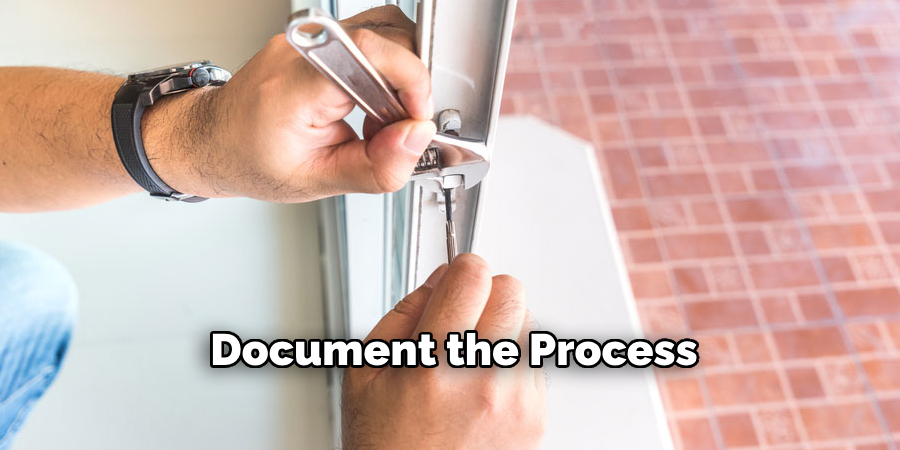
Conclusion
Unlocking a sliding door safely requires patience and the right approach. From using simple household tools to seeking professional locksmith assistance, numerous ways exist to address the issue without causing unnecessary damage. Maintaining your locks regularly and ensuring accessible spare keys are crucial preventive steps. If you’re wondering how to open locked sliding door without risking harm to the door or lock, remember to weigh the potential damage costs against hiring a professional. Prioritizing prevention and smart decision-making can save both time and money in the long run.

